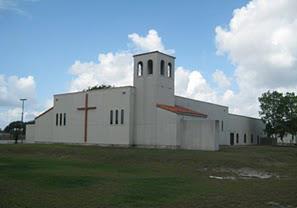A few days ago I was talking to a lovely young woman. She has one small child with another one on the way. She’s married and has a job that she really likes. We began talking about what she was going to do when the baby came. It’s been so long since my own children and grandchildren were small that I knew little to nothing about the hurdles of childcare for young people who are barely living above the poverty level. When our children were young, my wife was a stay at home mom, so the question never came up about the cost of childcare. She then said that each child would cost $400. a child and that was a cut rate since her employer picked up part of the cost. I asked if there was a break for the second child. She laughed and said, “you know both children need to be fed and changed and be given attention. They probably should charge more for the second one.” She then said, “Childcare will take most of my take home salary.” Her answer angered me. Why should this woman who loved her job and loved her family have to make the choice of either quitting her job or basically working for nothing. As I heard her answer, I thought about women who had no husband or other family to help. What do low income single mothers with children do to get by. So, I decided to do a little research and see what other countries did in the way of childcare for working parents. I was appalled at what I found.
Family Leave in the United States
“The FMLA (Family Medical Leave Act) provides the right to a short (12-week), jobprotected parental leave for workers who meet qualifying conditions (that is, those who work in firms of at least 50 employees and have worked at least 1,250 hours in the prior year). Because of these qualifying conditions, fewer than one-half of the nation’s private-sector workers are eligible for leave guaranteed by the FMLA.5,6 A further limitation of the FMLA as a family leave policy is that it does not include any income replacement or pay during the leave; as a result, some workers who are eligible for leave do not take it.7 ” (See Table 1 :not shown here)
“Countries also vary in the extent to which the costs of child care are borne by government or by parents.26,27 Although data are not available for all countries, the pattern of results in Table 2 indicates that here, too, the United States lags behind other countries. One estimate suggests that the U.S. government covers 25% to 30% of the cost of child care for children under age three and children ages three to six. (This support takes several forms in the United States: tax credits to reimburse parents for child care fees, subsidies given to parents, and care that is purchased for free or at a reduced cost.) In the other countries for which data are available (Denmark, Finland, France, Norway, and Sweden), government funds the majority of the costs of care, covering between 68% and 100% of the costs depending on the country and the age of the child.” (show table 2 not shown here)
In other countries Family Medical leave can be from one to three years with some countries providing income replacement. After family leave has expired most of these same countries provide some form of subsidized or complete childcare.
For volumes 14, No. 2 and before, please use this attribution: “From The Future of Children, a publication of the David and Lucile Packard Foundation from 1991 to 2004.”
For volumes 15, No. 1 and all subsequent journals and written materials, please use this attribution: “From The Future of Children, a collaboration of the Woodrow Wilson School of Public and International Affairs at Princeton University and the Brookings Institution.”
The health and education of children are greatly influenced by early childhood development and nurturing. If you were to consider the educational achievement in those countries having a liberal family leave and childcare programs, you might be able to make inferences to why those countries have a higher educational achievement and the U.S. lags behind those same countries. Many school district in the U.S. provide some form of early childhood intervention. However, they are only partial educational interventions which still require parents to leave work early to take care of the children.
It would seem that one of the richest countries in the world could help provide a more liberal program for family leave and childcare. This is particularly true as it affects the working poor. Affluent families are more able to provide these benefits to their children and families.
This is not just an issue that affects my young friend in Alief. It affects millions of families all over America.


 As
As 










